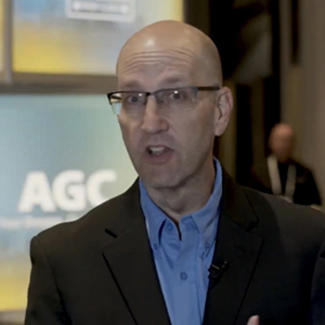Dynamic People
Two great guests this week and another Summer Q&A
Fun new episode of the From the Fabricator podcast just dropped. I caught up with two dynamic people with interesting backgrounds. I start off with Karolina Styk of Press Glass. Super bright and passionate for our industry. It was cool to hear about her journey from Poland to the US and how she’s really leaned into the whole glass industry space, both in products and culture.
Next, I visited with Corey Thompson of Pellucere. Impressive guy with serious credentials, and he and his team are developing some game-changing products. Corey’s journey was unique as well, and I love his dedication to his alma mater and how that’s now paying off for his company. I enjoy bringing new stories to the forefront and these two fit the bill nicely. Thanks in advance for checking it out!
Watch on YouTube, or listen here, as well as by searching "From the Fabricator" on Apple, Spotify, etc.
Elsewhere…
Differences between ABI and DMI
A good friend of mine hit me with a tremendous question this past week. It was: “Why is the ABI down when the DMI is up? Aren’t they both surveying the same market?” At that point, the lightbulb went off for me that I probably should explain some of the differences. This came up because the last DMI (Dodge Momentum Index) was very positive and even somewhat bullish. At the same time, the ABI (Architectural Billings Index) was still muddling along in negative territory. Overall, there’s a handful of differences.
To me, one of the biggest is scope. The ABI surveys architects of all sizes and disciplines. So that can affect the index when firms are in slower segments (like offices right now) and are either too big or too small. The DMI is focused on actual projects on the books. So you don’t have that chance for a swing. Next is where the numbers take hold. In the ABI, it’s during the billing phase of the project that the DMI starts tracking in the planning stage. So, when I note “inquiries” are staying positive, that’s closer to the DMI than the actual index. There are a few other subtle differences, but these are the main ones. With all that said, I’d say things aren’t as bad as the ABI says and not as good as the DMI notes. And the bottom line is we’re still softer in many areas than we’d like, and we have to continue to work every aspect of our businesses to address these challenges. These indices are great guides, but the hustle and resilience of your organization will make the difference in the end.
NGA Glass Conference: Ann Arbor
One way you can help your organization, especially if you’re a fabricator…attend NGA Glass Conference: Ann Arbor next month. The program is coming together and the technical info and direction provided by the brilliant Urmilla Sowell and her team of NGA Tech Super Heroes is critical to your business and our industry. This is where the guidelines are set and future codes get hashed out. See more information here, or ping me and I can run it all down for you. And if you can’t make this one, then getting to GlassBuild is a must. Really getting to GlassBuild regardless is a must.
Summer Q&A Series
Summer Q&A is back this week… only a couple left as the slow season is winding up. This week, I catch up with old friend Andrew Haring at FHC. It was nice to hear his thoughts on supply chains, trends, and industry support. Andrew always brings it, and he did once again here.
MAX: There's been a lot of supply chain talk/concerns out there. How is FHC navigating through it?
ANDREW: Brother, I could go eat up a lot of blog character pixels with a doozy of a response on this! The simple answer is that while there are unavoidable hurdles and very real paint points that have hurt a lot of good companies, there’s also anxiety-inducing speculation and preemptive hatch-battening that has been just as damning and disruptive with project stalls and full stops.
While the manufacturer/supplier in me wants EVERYONE to buy and install my product on every project, I’ve consistently gone on record touting supply chain diversification. Don’t put all your eggs in one basket. Have a plan A, B, & C. Always.
Market conditions and factors have a symbiotic impact on pricing and lead time, and unfortunately there are some bad actors that have made premature and self-serving blanket price increases to protect shareholders—because they can. FHC has taken a different, somewhat unconventional approach that prioritizes the customer. Early in the year when tariffs were looming… we proactively lowered prices and now continue to shoulder as much as possible instead of immediately and haphazardly kicking the burden down to our glaziers and fabricators. While others are jettisoning manufacturing capabilities and closing locations, we’re investing in both. We feel a sense of duty to work with and protect our people and are backing that.
The good news is while it may be a rickety boat with a lot of holes in it, we’re all in it together.
MAX: Curious about what trends you are seeing from your product line? A particular product growing or finish or both etc?
ANDREW: Moreso than specific product trends… the real shift in buying behavior has come down to lead time, customization, support and trust. I see more and more people prioritizing these qualities when sourcing vendors. “New” reheated widgets and obscure finishes are often empty calories that might temporarily attract and distract, but the long-game codeshift in trends is a return to business fundamentals. Maybe I’m just old.
MAX: FHC is super active in the industry and has been heavily involved in the AGMT testing. How is that going for you, and what was the drive to not only get behind that but also be heavily involved in industry education?
ANDREW: Funny you mention that. We are literally unloading AGMT test units at our facility as we speak. It’s a short, simple answer. We want to give back to this incredible industry that has given us so much. One of the surest ways we can do that is by contributing to initiatives that are actively and effectively working to triage the skilled labor shortage wound this industry has suffered. We do this by volunteering expertise, donating tools & supplies, or bankrolling apprenticeships, scholarships, certification candidates, or course creation.
There’s a generation of seasoned, skilled glaziers that are retiring faster than we can backfill with new blood. We’re ready to go to the mat to combat that. In addition to hosting our own educational and training events, workshops and webinars, we’re betting on ponies like AGMT Glazier Certification, LearnGlazing.com, and NGA/MyGlassClass/Apprenticeship programs. In part to have an immediate effect, but also to hopefully inspire other manufacturers and suppliers to follow suit. It takes a village for this heavy-lift, and I invite ANYONE (friend or competitor) to reach out to me directly and strategize how we untangle this nasty ball of yarn together. Call me.
Thank you, Andrew! Next week, the final installment will have someone talking about the future of glazing from the installer side. Can’t wait!


